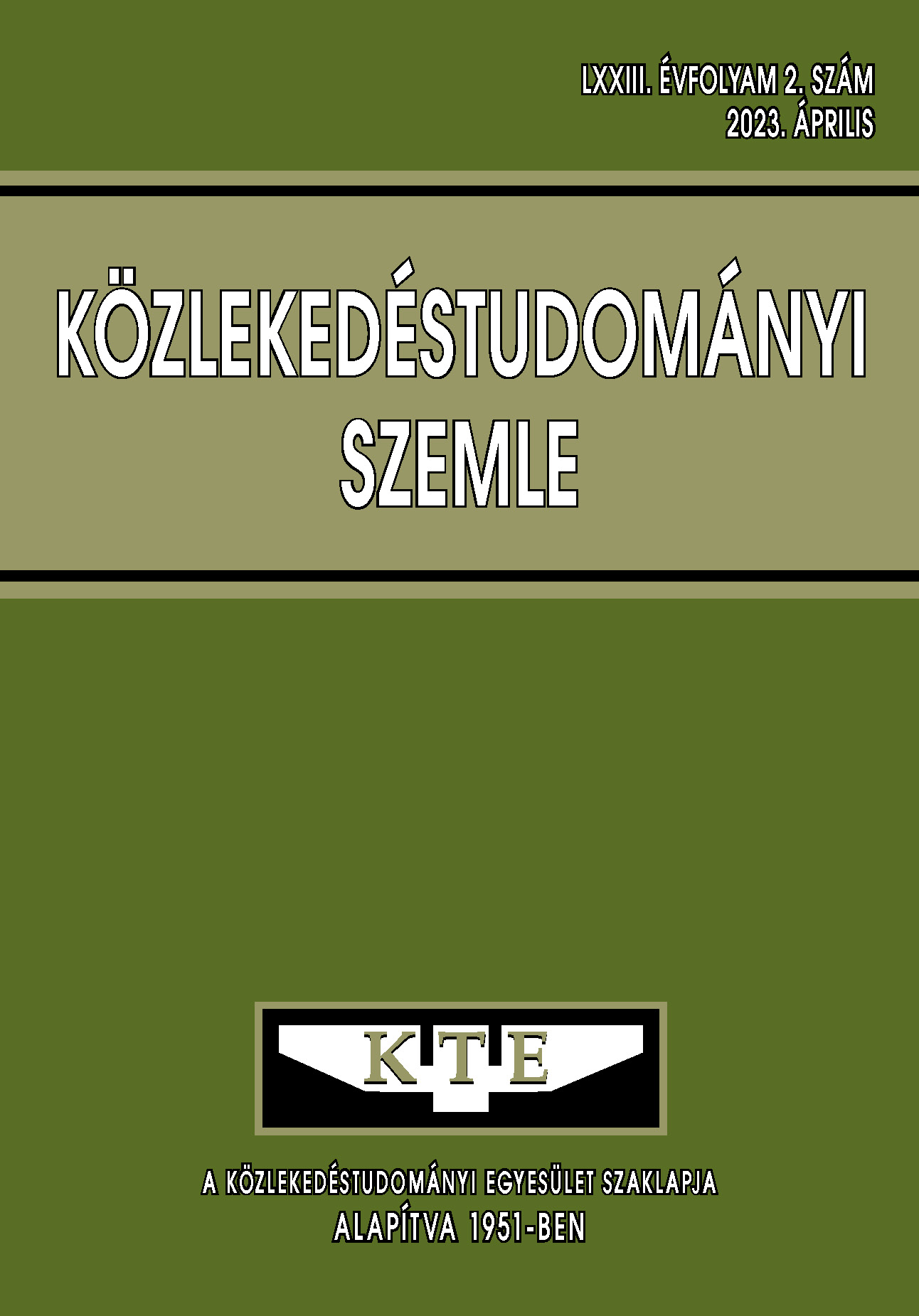Egy barnamezős beruházás közlekedésfejlesztési kihívásai a fenntarthatóság jegyében
Absztrakt
Barnamezős területeknek azokat a területeket nevezzük, amelyeket korábban jellemzően ipari, kereskedelmi vagy katonai célokra használtak, és alacsony koncentrációjú szennyezéssel terheltek, ezért lehetséges az újrahasználat, a funkcióváltás. A barnamezős beruházások zöldmezős beruházásokkal szembeni egyik legfőbb előnye, hogy egyrészt a közmű-infrastruktúrát és úthálózatot nem szükséges már kialakítani, mert ez már kiépült, másrészt a fejlesztés területtakarékos. További előny, hogy a beruházás a környezeti állapotok javítása mellett valósul meg, hozzájárulva a településrész felértékelődéséhez, a fenntartható fejlődéshez.
Hivatkozások
Vasvári B., Mayer G., Vasa L. (2020) - A tudományos és innovációs parkok szerepe a tudásgazdaság és az innovációs ökoszisztéma fejlesztésében - TÉR GAZDASÁG EMBER, 2020/2, 8, 95-107
A Győri Keksz Kft. Története Győri Keksz Kft. – Wikipédia (wikipedia.org) letöltve: 2022. 04. 05.
A Győri Kekszgyári raktár megmaradt épülete - Kekszgyári raktár (moderngyor.com) letöltve: 2022. 04. 05.
European Conference of Ministers Responsible for Spatial/Regional Planning (CEMAT) – Glossary of Key Expression Used in Spatial Development Policies in Europe, Lisbon, Lisbonne (Portugal), 26-27 October/bre 2006 cemat_glossary.pdf letöltve: 2022. 04. 05.
Kádár K. (2014) The rehabilitation of former Soviet military sites in Hungary -Hungarian Geographical Bulletin 63 (4) (2014) 437–456. DOI: https://doi.org/jzww
Abbas M. Hassan, Hyowon Lee (2015) - The paradox of the sustainable city: definitions and examples - Environ Dev Sustain (2015) 17:1267–1285 DOI: https://doi.org/jzwx
Guidelines for Developing and Implementing a Sustainable Urban Mobility Plan sump_guidelines_2019_interactive_document_1.pdf (eltis.org)
Aczél G., Márton M., Csizmadia Z. (2014) Integrált Településfejlesztési Stratégia Győr 2014-2020 –Barnamezős területek
Győri Ipartörténeti Alapítvány - Ipartörténeti emlékhelyek - Magyar Waggon- és Gépgyár Rt. (ipartortenet.hu)
A TSPC készít látványterveket az új győri kulturális negyedről.
Jakab L. (2005) Laktanya a város szívében-HELYBENjárás - Győri Szalon (gyoriszalon.hu)
"Intermodális közösségi közlekedési csomópont kialakítása Győrött" és "Győr városi és elővárosi közösségi közlekedési rendszerének átalakítása" (2012) "Intermodális közösségi közlekedési csomópont kialakítása Győrött" és "Győr városi és elővárosi közösségi közlekedési rendszerének átalakítása" FŐMTERV (fomterv.hu)
Kohn- féle olajgyár története Győri Ipartörténeti Alapítvány - Ipartörténeti emlékhelyek - Kohn-féle Olajgyár (ipartortenet.hu)
Bedők A. (2021) Barnamezős beruházások közlekedésfejlesztési összefüggései - Diplomamunka
TSPC Kft., Szakági tervező: STRÁG Kft., Közreműködő tervezők: Dr. Koren Csaba, Dr. Makó Emese, Dr. Miletics Dániel, Dr. Winkler Ágoston, Dr. Juhász Mattias (2019) Megvalósíthatósági Tanulmány- Győr, Tudományos és Innovációs Park- E2 Közlekedés Analízis és Megvalósíthatósági munkarész
Településfejlesztési koncepció
Győr ITS 2014-2020
Győr MJV Szerkezeti Terv http://onkormanyzat.gyor.hu/cikk/rendezesi_terv.html
Győr MJV Szabályozási Terv http://onkormanyzat.gyor.hu/cikk/rendezesi_terv.html
TSPC Kft., Szakági tervező: - Aczél Városépítész Bt.: Aczél G., Márton M. (2019) Megvalósíthatósági Tanulmány- Győr, Tudományos és Innovációs Park- E1 Városrendezés: Analízis és Megvalósíthatósági munkarész
TSPC Kft., Szakági tervező: STRÁG Kft., Szakági tervezők: Koren Cs., Makó E., Dr. Miletics D., Winkler Á, Juhász M. (2019) Megvalósíthatósági Tanulmány- Győr, Tudományos és Innovációs Park- E2 Közlekedés Analízis és Megvalósíthatósági munkarész
ÚME e-UT 02.01.31 - Közutak távlati forgalmának meghatározása e-UT 02.01.31 - Közutak távlati forgalmának meghatározása előrevetítő módszerrel - Útügyi Műszaki Előírások (kozut.hu)
Sustainable Urban Mobility Plan (SUMP) sump_guidelines_2019_interactive_document_1.pdf (eltis.org)
Macsinka K. (2012) A területhasználati funkciókhoz tartozó parkolási igények meghatározásának módszertana a fenntartható közlekedés elvei szerint Doktori értekezés
Az elektronikusan megjelenő cikkek nyílt hozzáféréssel rendelkeznek (OJS), online ingyenesen elérhetők és letölthetők. A cikkek szerzőit nem terheli megjelentetési vagy kiadási költség (APC). Felhasználóknak joguk van a cikkek olvasására, letöltésére, másolására, kinyomtatására, valamint azokban való keresésre, vagy a teljes szöveg linkkel történő megosztására.
A szerzőknek nyilatkozniuk kell arról, hogy beadványukat korábban nem tették közzé más folyóiratban, a pénzügyi támogatás feltüntetésre került és a hivatkozások listája teljes és pontos, beleértve az URL-ek és a DOI-k specifikációját is (ha rendelkezésre állnak). A cikktervezet beadásakor minden szerző jóváhagyja a benyújtott változatot. A szerzők garantálják, hogy a cikk az ő eredeti művük. A szerzők kötelesek részt venni a szakértői értékelés folyamatában, követni a bírálók tanácsait, betartani az előírt határidőket, és amennyiben előfordulnak, kötelesek visszavonni a benyújtást vagy kijavítani a hibákat.
Minden beadott cikket szakértői értékelés alá kerül, ahol a szerkesztők független értékelést kérnek legalább egy szakértőtől, ügyelve arra, hogy a bíráló(k)nak ne legyen összeférhetetlensége a szerzőkkel. A végső döntést a főszerkesztő hozza meg, aki figyelembe veszi az értékeléseket és a szerkesztők javaslatait. A szerkesztők és a lektorok bizalmasan kezelik a beadványt.
A kiadó és a szerkesztők elkötelezettek a magas etikai normák betartása mellett, és megakadályozzák azokat a publikációkat, amelyekben kutatási visszaélés történt. Az ilyen etikai kérdésekben a COPE irányelveit követik.
A szerzők fenntartják a szerzői jogokat, és megadják a folyóiratnak az első közzétételi jogot a Creative Commons Licenc alapján (https://creativecommons.org/licenses/by-nc-nd/4.0), amely lehetővé teszi mások számára, hogy megosszák a művet, elismerve a mű szerzőségét és a folyóiratban való első közzétételt.
A folyóirat archiválja az összes megjelent cikket, és a folyóirat tulajdonosa, a Közlekedéstudományi Egyesület továbbra is üzemelteti az adatbázist abban az esetben is, ha a folyóirat kiadása megszűnik.















